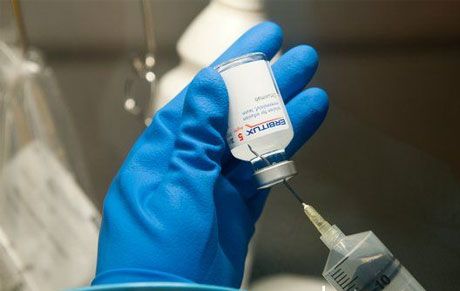New publications
A method for protecting healthy cells during chemotherapy has been developed
Last reviewed: 01.07.2025

All iLive content is medically reviewed or fact checked to ensure as much factual accuracy as possible.
We have strict sourcing guidelines and only link to reputable media sites, academic research institutions and, whenever possible, medically peer reviewed studies. Note that the numbers in parentheses ([1], [2], etc.) are clickable links to these studies.
If you feel that any of our content is inaccurate, out-of-date, or otherwise questionable, please select it and press Ctrl + Enter.
American scientists have come up with a method for protecting healthy human cells during chemotherapy for malignant neoplasms. The latest technology was tested by a team of scientists led by Jennifer Adair from the Fred Hutchinson Cancer Research Center (Seattle, Washington, USA). The report on the study was published in the journal Science Translational Medicine.
For chemotherapy of malignant tumors, various substances are used that directly cause cell death or trigger apoptosis (programmed death) processes. At the same time, such medications are highly toxic not only to cancer cells.
In particular, the bone marrow, which performs the hematopoietic function, is especially susceptible to their effects. Damage to the bone marrow by antitumor substances is fraught with a decrease in the number of leukocytes, which provide an immune response, and also erythrocytes, which can cause the development of anemia.

Three patients with the most common brain tumor, glioblastoma, were selected to participate in this study. The researchers took samples of bone marrow stem cells from the patients. Using a viral vector, they modified the genetic information of these cells, making them insensitive to the effects of temozolomide, which is used for chemotherapy of glioblastomas. The modified stem cells were transplanted back into the patients.
According to the results of the study, patients tolerated chemotherapy treatment better, they had fewer side effects to the therapy than under normal conditions. All three patients managed to exceed the average survival period for this disease, which is 12 months. The authors of the work noted that in one of the study participants, the disease has not progressed over the past 34 months after the therapy.

 [
[